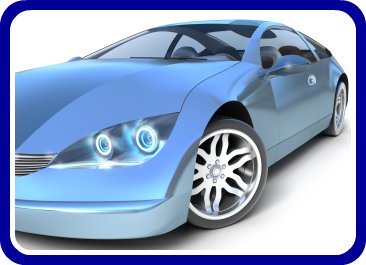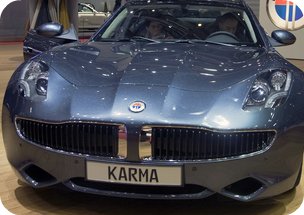Plug-in-hybrid-vehicles: Low Cost and Flexible Fueling Benefits
Plug-in-hybrid-vehicles are another form of clean, convenient, alternative energy transportation. Lower fuel costs, less green gas emissions, and the convenience of at home battery recharging makes the plug-in-hybrids the vehicles to buy.
These Plug-ins have flexibility in which they can refuel with gasoline, diesel or other types of fuels, and can battery charge overnight. This can be done at home, at a fleet facility, at work, or at public charging stations.
The Series and Parallel Plug-in-hybrid-vehicles
Series Plug-in-Hybrid-Vehicles uses the gasoline engine solely to create electricity for the powering of the electric motor to turn the wheels of the vehicle. They can run just on electricity until the battery needs recharging, so on short trips these Plug-ins might not use gasoline at all.

Parallel Plug-in-Hybrid-Vehicles unlike the Series Plug-ins that have only the electric motor to turn the wheels, have both the gasoline engine and the electric motor mechanically connected to the wheels.
Depending on driving conditions, both engine and motor propels the vehicle, and the electric-only operation occurs only on low speeds.
A benefit of the plug-in-hybrid-vehicle, is the elimination of fear from being stranded by a depleted battery. With a gasoline engine serving as a back-up, the battery can be recharged to power the vehicle, and also because of their higher fuel economy these Plug-ins are lower in greenhouse gas emissions while they operate in Hybrid Mode.
Compared to conventional vehicles they have reduced fuel costs due to the low cost of electricity in comparison to gasoline. Their reliance in whole or in part is on electric power, that is why the cost for electricity to operate these Plug-in-hybrid-vehicles is less than one quarter the cost of gasoline in U.S. California.
In Canada, because electricity can be generated from renewable and low emission sources, the market for Plug-in-hybrids is growing as people look for cleaner more efficient vehicles. It was predicted, that by 2018 there would be at least 500,000 or more of these vehicles on Canadian roads.
Plug-in-hybrid-vehicles Issues:
Batteries used in Plug-in-Hybrid-Vehicles are usually the Lithium-ion batteries. These batteries have a high-power-to-weight ratio, high energy efficiency, good high temperature performance, and low self-discharge. Also, most of their components can be recycled.
Work is now underway to develop battery recycling processes that will minimize the life-cycle impacts of using the Lithium-ion, and other kinds of batteries in vehicles.
Some Issues concerning the Plug-in-Hybrids are their purchase prices, but as production volume increases the prices are likely to go down and lower fuel costs could offset the vehicle cost.
Another issue is the price of the batteries if they need to be replaced, they can be very expensive to buy, however the warranty that comes with the vehicle usually covers the Plug-in-Hybrids components well beyond the bumper-to-bumper warranty period.
Several Countries are giving Grants and Tax Credits for the purchase of Plug-in-Hybrids. An example is, that in the U.S., Federal Tax Credits are available for vehicles that qualify.
For more on this see Hybrid Vehicles and Electric Hybrids.
Return to Alternative-Global-Energies.



